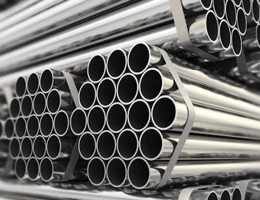Methanol, also known as methyl alcohol or wood alcohol, is the simplest alcohol with the chemical formula CH3OH. It is a colorless, volatile, flammable liquid with a distinctive alcoholic odor. Methanol is a versatile chemical with a wide range of applications in various industries.
Here are some of the key properties of methanol:
- Chemical formula: CH3OH
- Appearance: Colorless liquid
- Odor: Distinctive alcoholic odor
- Boiling point: 64.7 °C (148.4 °F)
- Melting point: -97.8 °C (-144 °F)
- Density: 791 kg/m³ (0.791 g/cm³)
- Solubility: Miscible with water, ethanol, and many other organic solvents
Production of Methanol
There are several methods for producing methanol, but the most common one is the catalytic conversion of natural gas (methane) with steam in a process known as steam reforming. This process involves heating methane and steam to high temperatures (around 250-350 °C) in the presence of a catalyst, typically a metal oxide like copper or zinc oxide. The reaction produces a mixture of gases, including hydrogen, carbon monoxide, and carbon dioxide. This mixture is then subjected to a series of additional processes to separate and purify the methanol.
Applications of Methanol
Methanol has a wide range of applications in various industries, including:
- As a fuel: Methanol can be used as a fuel in internal combustion engines, boilers, and fuel cells. It is a cleaner-burning fuel than gasoline or diesel, producing fewer emissions.
- As a chemical feedstock: Methanol is a versatile starting material for the production of various chemicals, including formaldehyde, acetic acid, MTBE (methyl tert-butyl ether), and dimethyl ether (DME).
- As a solvent: Methanol is a good solvent for a wide range of materials, including paints, resins, and lacquers. It is also used in antifreeze solutions and windshield washer fluid.
- As a denaturant: Methanol can be added to ethanol (drinking alcohol) to make it unfit for human consumption.
Safety considerations
Methanol is a toxic substance and can be harmful if inhaled, ingested, or absorbed through the skin. It is essential to handle methanol with care and follow appropriate safety precautions, including wearing personal protective equipment such as gloves, safety glasses, and respirators when necessa
Methanol Production Methods: A Closer Look
While the previous response mentioned the most common method, there are several ways to produce methanol, each with its advantages and limitations:
1. Steam Reforming (Most Common):
- Process: Natural gas (methane) reacts with steam at high temperatures (250-350 °C) in the presence of a catalyst like copper or zinc oxide. This produces a mixture of gases, including hydrogen, carbon monoxide, and carbon dioxide. Further processes separate and purify the methanol.
- Advantages: Mature technology, high efficiency, readily available resources (natural gas).
- Disadvantages: Relies on fossil fuels, can generate greenhouse gases (CO2) during production.
2. Coal Gasification:
- Process: Coal is converted into a synthetic gas (syngas) containing hydrogen and carbon monoxide through a high-temperature, high-pressure process. This syngas then undergoes further reactions to form methanol.
- Advantages: Can utilize abundant coal resources, potential for cleaner production with carbon capture and storage (CCS) technology.
- Disadvantages: High-polluting process without CCS, relies on non-renewable resources.
3. Biomass Gasification:
- Process: Similar to coal gasification, but uses biomass (organic matter like wood chips or agricultural waste) as the feedstock. The syngas produced then undergoes further reactions to form methanol.
- Advantages: Renewable source, potentially carbon-neutral if sustainably managed biomass is used.
- Disadvantages: Requires readily available and sustainable biomass resources, technology is still under development compared to other methods.
4. Direct CO2 Conversion:
- Process: Emerging technology that utilizes captured carbon dioxide (CO2) and hydrogen (often from renewable sources) to directly synthesize methanol.
- Advantages: Potentially carbon-negative approach, reduces dependence on fossil fuels.
- Disadvantages: Technology is at an early stage, high energy requirements, requires readily available and cost-effective hydrogen source.
Choosing the most suitable method depends on several factors:
- Availability and cost of resources: Natural gas being readily available makes steam reforming common.
- Environmental considerations: Biomass gasification and direct CO2 conversion offer lower environmental impact.
- Technological advancements: Direct CO2 conversion holds potential but is still under development.
The future of methanol production likely involves a combination of these methods, with a shift towards more sustainable options like biomass gasification and direct CO2 conversion as technology advances and environmental concerns become increasingly paramount.
If you need Iranian methanol for export, contact Naftab.

